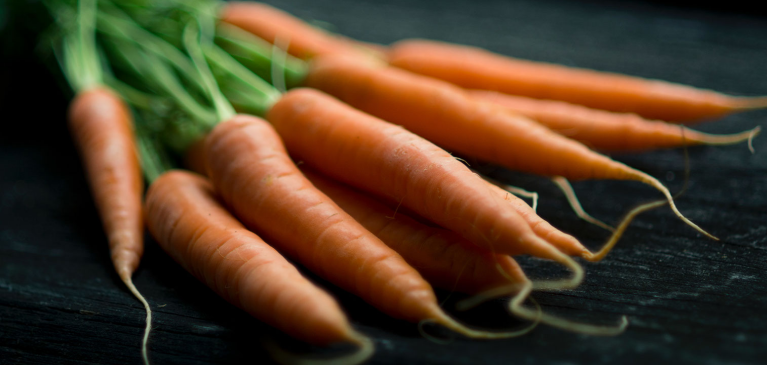
Commercial vegetable production, as well as private farm gardens, have started picking a bounty of goodness – from pickling cucumbers and zucchini to snap peas and broccoli. Michigan is the second most diverse state in the U.S. and vegetables are a significant component to its specialty crop offerings.
Wisconsin is one of the top states in the production of the major processing vegetables, including snap beans, carrots and green peas. The state ranks third in the nation in potato production, harvesting potatoes on 68,500 acres in 2020.
After a slow start this year, crops are growing with the promise of good things to come. Planting was delayed some this year with the cool temperatures and rain. “After last year, growers were hoping to have a fast start, but it was similar to last year,” says Brandon Leep, vice president of GreenStone Farm Credit Services agribusiness lending. “It wasn’t as bad as last year. Crops weren’t completely wiped out, but rather delayed. Last year was a struggle for a lot of vegetable producers with a lot of rain and then some hail early in the season that really set them back. Some growers were buying produce from other sources to fulfill contracts. And some were buying it for more than what their contract was,” Leep adds.
On the plus side for this year, vegetable demand is strong and prices are good, according to Leep.
One challenge, according to Andy Todosciuk, owner of Andy T’s Farm Market in St. Johns, is having enough labor to care and harvest the crops. He has 100 acres of corn, 100 acres of soybeans and 100 acres of specialty crops, including tomatoes, pickling cucumbers, zucchini, squash, pumpkins and his signature sweet corn. “We’ve cut back production of our high-labor vegetables, but stayed the same with our sweet corn,” says Todosciuk, who is too small for the H2A program that assists agricultural producers in bringing in nonimmigrant foreign workers for temporary or seasonal work.
With a lot of his pumpkins being marketed to Georgia, Todosciuk also has concerns with freight costs, which have come down some recently with more drivers being added. “But I wish I had a crystal ball to know what the situation is going to look like in October,” he says.
His vegetable crops are faring better this year than last. “We haven’t had dew and the disease pressure like we normally would,” he says. “With the sunshine we’ve had, everything is growing well.”
Todosciuk, like a lot of vegetable growers, has either trickle overhead or sub irrigation. “If you have water, you’re in good shape. I’m more worried about my (non-irrigated) field crops that are taking a hit with the drought we’re having, which seems to be the worst in Clinton County,” he adds.
For most of the state, a cool spring was followed by some high-heat days, causing some stunting at first emergence in potatoes, similar to the reported bean scorching, according to Michigan State University’s (MSU) vegetable crop report. The first leaves in some potato plantings were too tender to handle the bright light and heat. Secondary shoots began to break the surface in early July.
Southwest Michigan growers plan to begin harvesting the 2022 potato crop during the week of July 24. The crop appears to be in good condition, though it also has been hot and dry in some areas.
USDA puts the country’s 2022 potato area at 910,000 acres, which is down 33,000 acres from the 2021 crop, a 3.5% decline. The most significant cut came in Idaho, which planted 25,000 fewer acres of potatoes, a 7.9% reduction. Wisconsin, Florida, California, Minnesota, North Dakota, Texas, and Oregon also posted reduced plantings. On the other hand, Maine, Nebraska, and Washington increased potato acreage. USDA puts Michigan’s planted area at 46,000 acres, down 1,000 acres from the 2021 crop. Michigan ranks eighth in the nation for potato production with more than 47,000 acres.
Harvest of field-planted, fresh-market cucumbers, pickles, and summer squash is amplifying, with the quality reported as mostly good. However, cucumber beetle scarring has been severe on some farms, MSU reports.
Locally, farm markets seem to be doing well. “People like locally grown produce, and their cost to go the market is low and the quality is high,” says Ned Birkey, MSU Extension educator emeritus and owner of Spartan Ag. “Most farmers take a lot of pride in growing and selling a quality crop and 96% of all farms are family owned, even though the farm may be incorporated for various reasons.”
Asparagus harvest wrapped up in late June, after a year of blockbuster yields. “Weather was ideal for the asparagus crop this year, which led to a larger crop and good quality,” says Nichole Wilcox, vice president and group manager of GreenStone’s agribusiness lending. “We expect to see final numbers for both fresh and processing to be up this year. Markets, however, continue to be a challenged because of the large import volumes coming from Mexico and Peru.”
In early July, carrots and red beets were being pulled for the first time on some farms.
Broccoli and kale harvest is underway, but broccoli head quality suffered from the heat waves. MSU was advising growers that if their market supports the smaller “side shoots” broccoli produces, then it may be worth the time to cut off the low-quality main heads to encourage side shoots.
Field peppers and tomatoes are just starting to set fruit and size up. Main harvest is still a few weeks away, but some growers are on the cusp of early harvest of protected spring plantings. Michigan ranks seventh in the nation in the production of fresh market tomatoes, producing 132,600 tons of tomatoes for processing and 60 million pounds of tomatoes for fresh market.
Tags
Request for Information | Apply Now | Agribusiness


